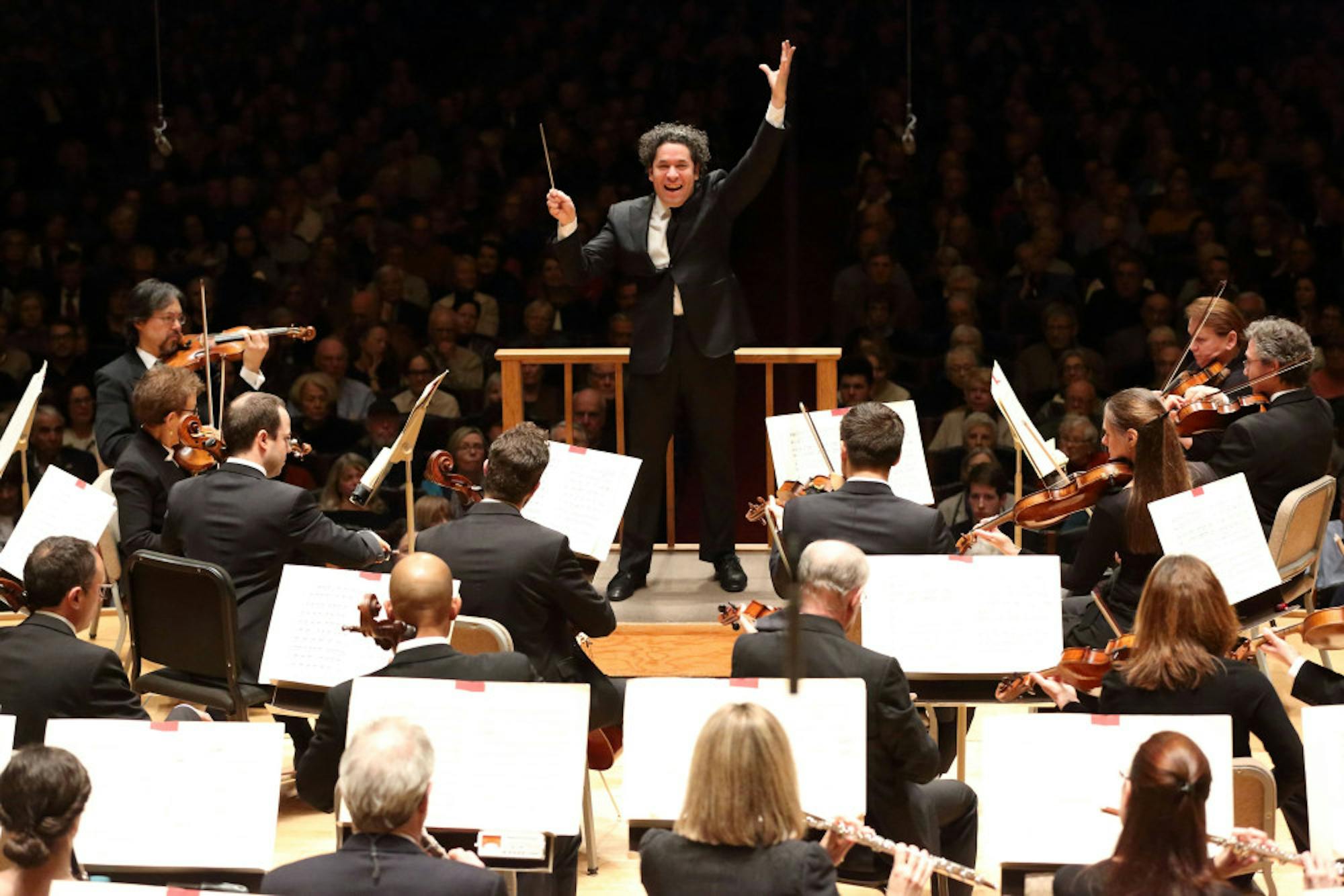Gustavo Dudamel, resident director of the Los Angeles Philharmonic, guest-conducted the Boston Symphony Orchestra (BSO) on April 5 in a captivating performance of Robert Schumann’s Symphony No. 1 and Igor Stravinsky’s “The Rite of Spring."
Schumann’s Symphony No. 1, nicknamed the “spring” symphony, was composed in under a month in 1841, and is a prime example of a Romantic period symphony. The dense orchestration, though criticized by some, provides a full sound that, in this performance, filled the entire hall. The work began with a triumphant brass fanfare, and although Schumann’s orchestration in this section lends itself to a heavy sound, the brass section of the BSO produced a light yet strong and extremely coherent opening to the work. This symphony was inspired by a line from a poem by Adolf Böttger, "Im Tale blüht der Frühling auf," which means “in the valley spring is blossoming," whose rhythmic structure was the source of the principle motif of the first movement of the symphony. The quick and syncopated melody traveled seamlessly between the instruments in this performance, something that demonstrated the incredible consonance between each member of this orchestra.
The second movement of the symphony began and, although the sound was initially thin, the musicians settled into the harmonies and quickly began producing a warm and luscious sound. This movement is known for its fine details of ornamentation, which appeared as subtle interjections from different sections of the orchestra; Dudamel made it a visual performance through the cuing of these interjections, which arose seemingly at random from different parts of the stage. The third movement, as typical of a Romantic symphony, is written as a scherzo, and was very dance-like. Dudamel’s conducting also became much like a dance in this movement, and rather than being a dancer that followed the music, the music followed him; he had complete control over the music. A new rhythmic motif is heard in the fourth and final movement, and at many times during the movement, at least one section of the orchestra was playing that rhythm or a variation of it. As in the other movements of this work, the finale is often very densely orchestrated, but this provides a stark contrast to the light melodic lines of the upper strings and winds that are apparent at several points during the movement, which came through the heavy sound of the lower-register instruments like rays of light peeking through clouds.
Igor Stravinsky’s "The Rite of Spring," composed as a ballet in 1913, made up the next piece on the program. Stravinsky, a Russian composer working in Paris, had recently finished the publication of two other ballets, "The Firebird" and "Petrushka," and wrote "TheRite of Spring" for Sergei Diaghilev and the Ballet Russe of Paris.This work is notable for its avant-garde style, which is full of harmonic dissonance, complex rhythmic structures and unique instrumentation, and was accompanied by non-traditional ballet dancing. The story of the work follows a pagan sacrificial ritual in which the tribe strives to become one with the earth. A young girl is chosen to dance herself to death as a sacrifice to the earth, and the choreography that accompanies the music reflects this story. The original performance of the work in 1913 actually incited a riot in reaction to the dissonant and experimental music and dance. This combination of unconventional music and dancing came as a shock to the audience members at the premiere, many of whom thought they were being mocked.
"The Rite of Spring" begins with a beautiful bassoon solo, but the orchestra soon falls into pandemonium. Dudamel kept his movements ironically calm and subtle even when the chaos began to unfold. He also led the orchestra without using a score, proving to the audience how he had internalized this music. The intricate rhythms and meter changes make this work incredibly difficult to execute, but the coherence of the orchestra allowed these complicated sections to be woven into as much of an organized structure as the cacophony permits. The orchestra flawlessly captured the wild spirit of this piece and created an exorbitant amount of tension and excitement in the hall. The instrumentation and atypical means of sound production, such as the use of mutes for the brass and harmonics in the strings, were emblematic of the experimental nature of "The Rite of Spring." The percussion section flourished in this piece, driving the rest of the orchestra in perfect synchronization with Dudamel. The closest thing to a riot that came out of this performance was the roaring applause and well-deserved standing ovation at the end of the work.
Gustavo Dudamel leads BSO in thrilling Schumann Symphony No. 1, Rite of Spring performances

Gustavo Dudamel is pictured conducting the Boston Symphony Orchestra on April 5.
Summary
This was an incredibly captivating concert that demonstrated the versatility of Dudamel and the BSO.
5 Stars





